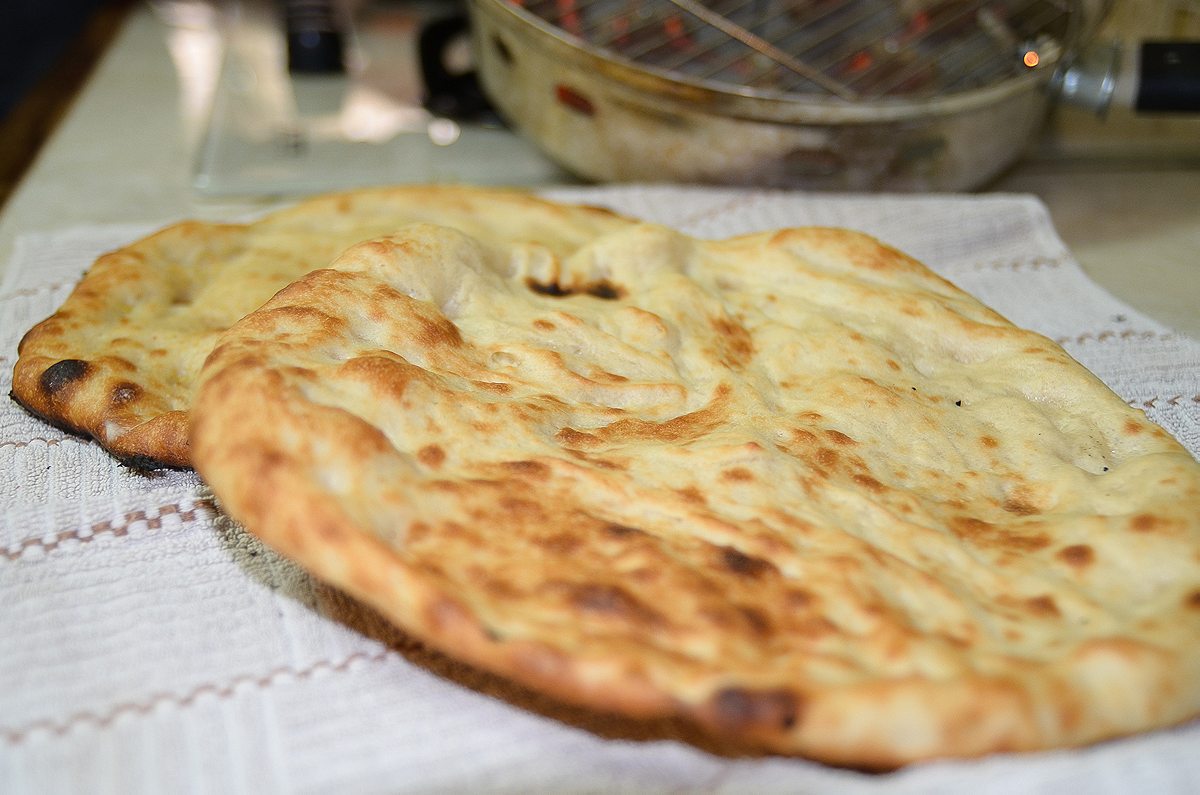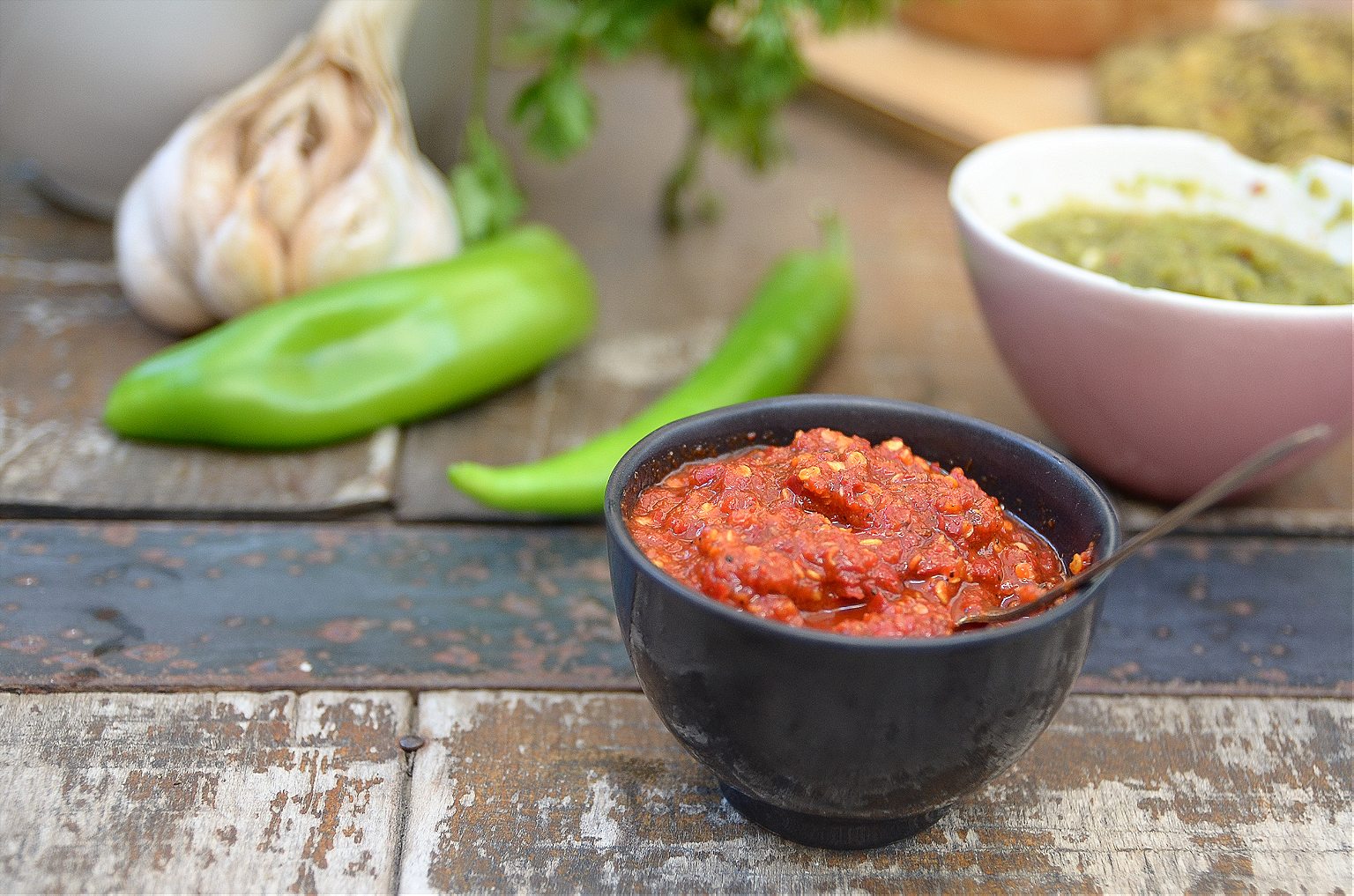When Yemen’s Jews came to Israel in the massive airlift of ’49-’50, they brought something vital with them: z’hug chili sauce.
My fascination with Yemen started in my teens, reading the books of the Greek sailor-poet Nikos Kavvadias, his words filling my head with tales of the sea, exotic ports, the dark sides of human nature roaming free on the margins of polite society. Mine was also a family of sailors, and I fancied I too would grow up to be an adventurer, carry a curved dagger in my belt, go to forbidden places, swagger and roam and soak up the wonders of the world.
In one of my favourite poems he spoke of the hashish dens of the Yemenite port of Aden, on the crossroads of the Red and the Arabian Seas, based on the tales of his friend “the black boilerman from Djibouti”.
“He told me how also he, one night after smoking, dreamt he rode horses on the ocean’s back, winged mermaids swift behind him. ‘Let’s get to Aden’, he would say, ‘and then you too will try it.’”
I immediately looked Aden up in a beat-up encyclopaedia, stumbling from there onto the entry about Yemen. It seemed to tie together everything Kavvadias put into his poems with a sense of place: a desert land remote and turbulent; mazes of lean, sand-coloured buildings perched on rocky outcrops; elaborate white friezes; carved window frames and stained-glass windows hiding worlds of hazy smoke and assassins lying in wait.
It wasn’t until years later that I learned that all that feeling exists also as a flavour. Deep, intricate, sensual: the taste you get in a mouthful of z’hug.
Z’hug is a beacon of red or bright green next to the soft pastels of tahina and hummus.
A staple of Yemenite Jewish cuisine, z’hug (pronounced z-kh-oogh, as guttural as you can get it) came to Israel in the airlift called Operation Magic Carpet, which brought most of the community to Israel in 1949-50. Z’hug is now ubiquitous, one of the condiments always standing by on falafel counters across the land—a beacon of red or bright green next to the soft pastels of tahina and hummus.
There’s a lot in its DNA to connect it to the other great chili-and-garlic sauces of the Middle East. But where its prim cousin harissa packs a straight punch, z’hug is stealthy and layered, a sauce of complex flavours hovering in tightrope balance: decadent amounts of zesty, powdery coriander, spiked by an aftertaste of sweet citrus, and in its comforting depths, a mix of heat and spices that dance and swirl like odalisques.
The first time I tried it was in Jerusalem’s Old City, in a Yemenite greasy spoon that served it as topping on its chalky, substandard hummus — the end effect one of emerald shards on old wallpaper paste. I ate a neat little crater down through the z’hug, and by the time I was mopping up the last specks of green from the base of the hummus volcano, I was forever addicted.
The search for the perfect z’hug has led me to comparative testing in Israel, Austria and France.
Since then, the search for the perfect z’hug has led me to comparative testing of all brands available in Israel (mass-produced, artisanal, secular, rabbi-blessed, or morally ambivalent settler-made), and also of the few European deli efforts I could get my hands on in Austria and France. It took me to the Yemenite souk of the dusty satellite town of Rosh Ha’Ayin, sticking my nose in spice buckets and asking questions with the help of a bemused and infinitely patient Israeli friend. And now it leads me to the kitchen of Ilana, a jewellery designer living on a hill settlement of the West Bank, for a crash course in the Yemenite recipes her family have been following for generations—for a master class in z’hug.
Taking her role as host and teacher seriously, Ilana has prepared some of the classics of Yemenite cuisine in advance. There’s a pot of soup bubbling on the stove: chicken and vegetables and herbs laced with hawaij, a spice mixture used in everything from stews to rice. As she talks about the soup, she dips her hands into a bowl of moist dough, scooping generously and spreading the mixture on the bottom of a flat pan fitted with an electric coil on the lid, a contraption that cooks the traditional Yemenite pita on both sides in less than five minutes.
It comes out crusty, glazed and the size of a dinner plate. I am offered a corner dipped in the ‘hilbeh’ sauce Ilana produces triumphantly from the fridge, another traditional staple unique to the Yemenite Jews. The frothy emulsion of soaked and whipped fenugreek seeds stands in stiff peaks like egg whites, pale yellow foam speckled with bits of crimson—it would not look out of place in Ferran Adrià’s kitchen. It is mellow and herby and delicious, but it’s not z’hug.
“I learnt to cook from my mother in law who came from Yemen to Israel in Operation Magic Carpet,” says Ilana, fishing her last pita from the pan and leaving it to cool off on the counter. “I used to wake up at 5 am to watch her make everything, hilbeh and pita and of course z’hug’.

The name of z’hug comes from the Yemeni adjective for ‘ground’, a nod to the traditional method of mashing all the spices together for hours on a big stone. I start looking around for a boulder, when she points with a smile to a heavy steel food processor gleaming on a corner of her counter.
“Yemenite food is healthy and full of flavour,” she says as she starts assembling the ingredients. “Z’hug cleans the blood and your sinuses and in combination with hilbeh is great for lowering blood pressure. Your stomach will always be clean, you’ll never get intestinal worms!”
I’ve never given much thought to worms and I am too busy tracking her hands as they move, so I tune out during the cheerful medical discussion she continues with one of her neighbours who have wandered into the kitchen. I note instead all the ingredients neatly lining up in glasses, bowls and spoons on her counter: coriander, garlic, small red peppers, a lime, cardamom, cumin and coriander seeds, ground cloves, salt, pepper, water and olive oil.
The spices go first into the belly of the steel beast, producing a satisfying crunch as they hit the whirring blades.
“To be very honest, Yemenite food is poor people’s food, a lot of dough, a lot of soup, like how much soup can you eat?”
She gathers the bowls towards her with both arms, like a croupier—the spices go first into the belly of the steel beast, producing a satisfying crunch as they hit the whirring blades. The garlic and coriander are next, the sides of the bowl splattered bright green.
“Yemenites in Israel have adopted dishes from other communities to expand their diet a bit, but our traditional cuisine is a big part of our identity and culture. You cook fresh every day, you invite people to your home to eat, there is never any left over.”
We set the table while the food processor is humming. Ilana scrapes stray coriander leaves down the side of the bowl, ads water, oil and the chillies, and sets it to pulse. The red flecks of the peppers shine against the deep green of the paste.
Z’hug ingredients vary slightly between Yemeni regions, and recipes are passed down through generations. Red z’hug, based on medium-hot red peppers, is all muscle and fire, while green z’hug is milder and more versatile: a sophisticated aroma with a spiky little hint of heat, it is mixed into tomato sauces or into yoghurt for dipping; used to liven up soups; and prepared as a topping for hummus, roast vegetables and the many kinds of Yemenite bread, from pita to the rolled, flaky jachnun and the fluffy, brioche-like kubaneh.
The soldiers at the checkpoint ask if we have any weapons, and I point to the [z’hug] on the dashboard.
“I couldn’t imagine life without z’hug,” Ilana says, unlocking the bowl from the machine and putting it under my nose for inspection. The kitchen floods with the fragrance, the herbs and spices still alive in the paste.
“No Yemenite could imagine life without z’hug! My husband went to France to work for a month and just had to take with him enough to last him, frozen, in a huge Tupperware box.”
I have a smaller but no less precious box with me when it’s time to leave, much later, when the sun is down and lunch has been eaten and stories exchanged. On the way back to Tel Aviv, the soldiers at the checkpoint ask if we have any weapons, and I point to the box on the dashboard, making a joke about the damage it can do when you eat too much.
At midnight, I open it for a last sniff before putting it in the freezer. It’s all still there: the salty seas, the desert, the winged mermaids, the assassins in the shadows.

Recipe for Green Z’hug
4 bunches fresh coriander, washed & spun dry
5 cloves garlic, roughly chopped
2 medium-hot red peppers (e.g. Fresno, Anaheim, Serrano or Mirasol), roughly chopped, stems removed (if using commonly available small dried chillies such as Tabasco, Thai or Bird, 6-8 would be more than enough)
Juice of one lime
2 tsp each cardamom seeds, cumin seeds, coriander seeds, salt, black pepper
1/2 tsp ground cloves
1/4 cup (60 ml) olive oil
1-2 Tbsp of water
In a food processor, pulse the spices, garlic and coriander (if your blender is not very powerful, go for ground spices) Add the lime juice, olive oil and water, blend briefly, and then add the chillies. Pulse until uniform. Fresh z’hug keeps for 2 weeks in the fridge (top up with olive oil to prevent mould) or for 4 months in the freezer.